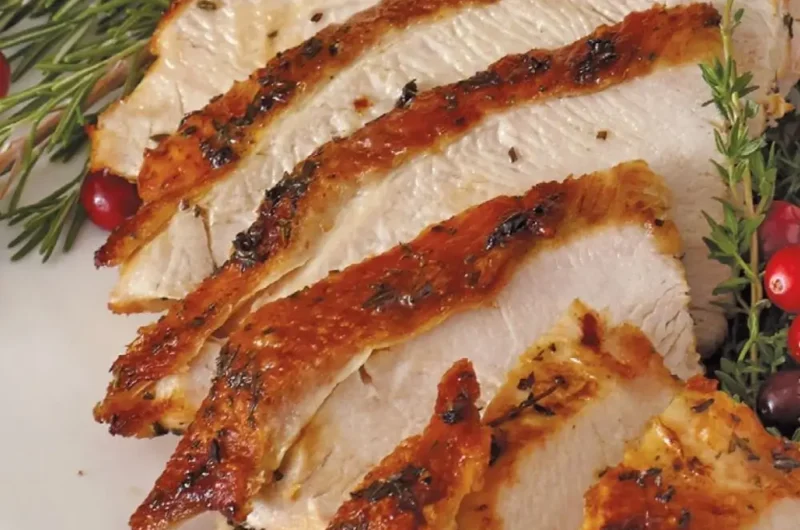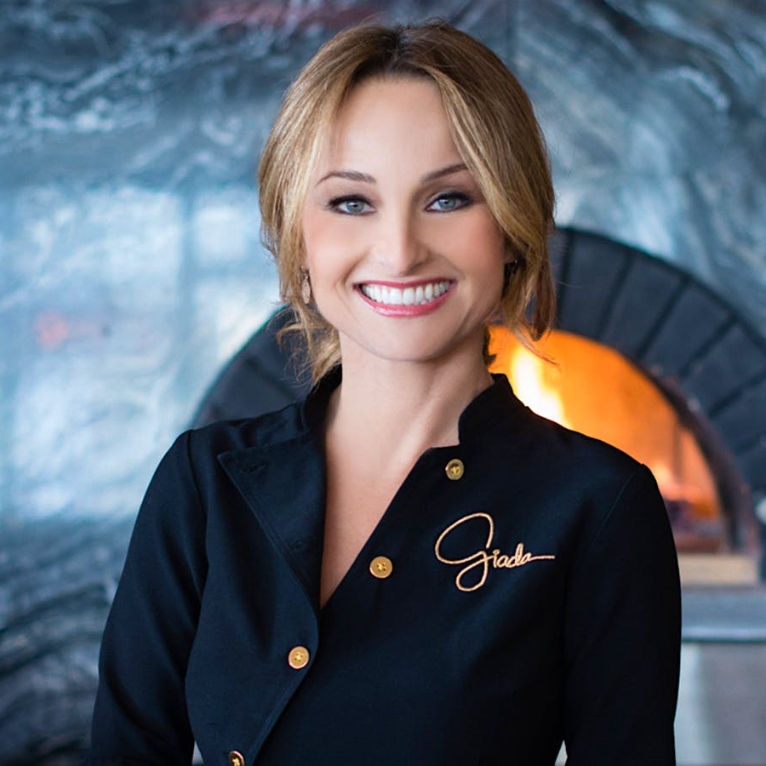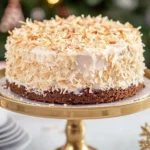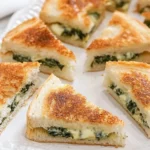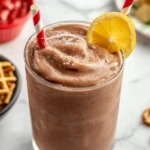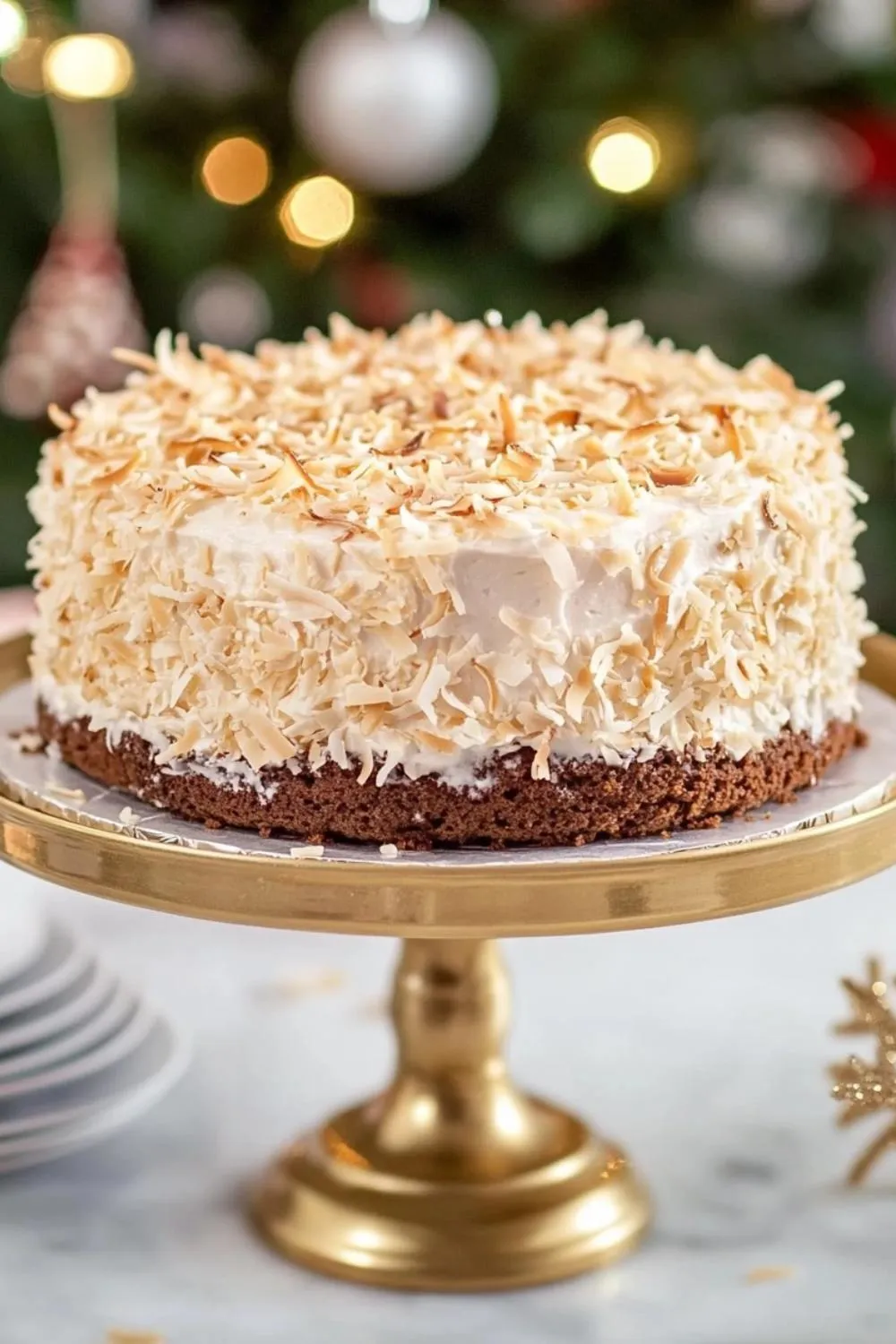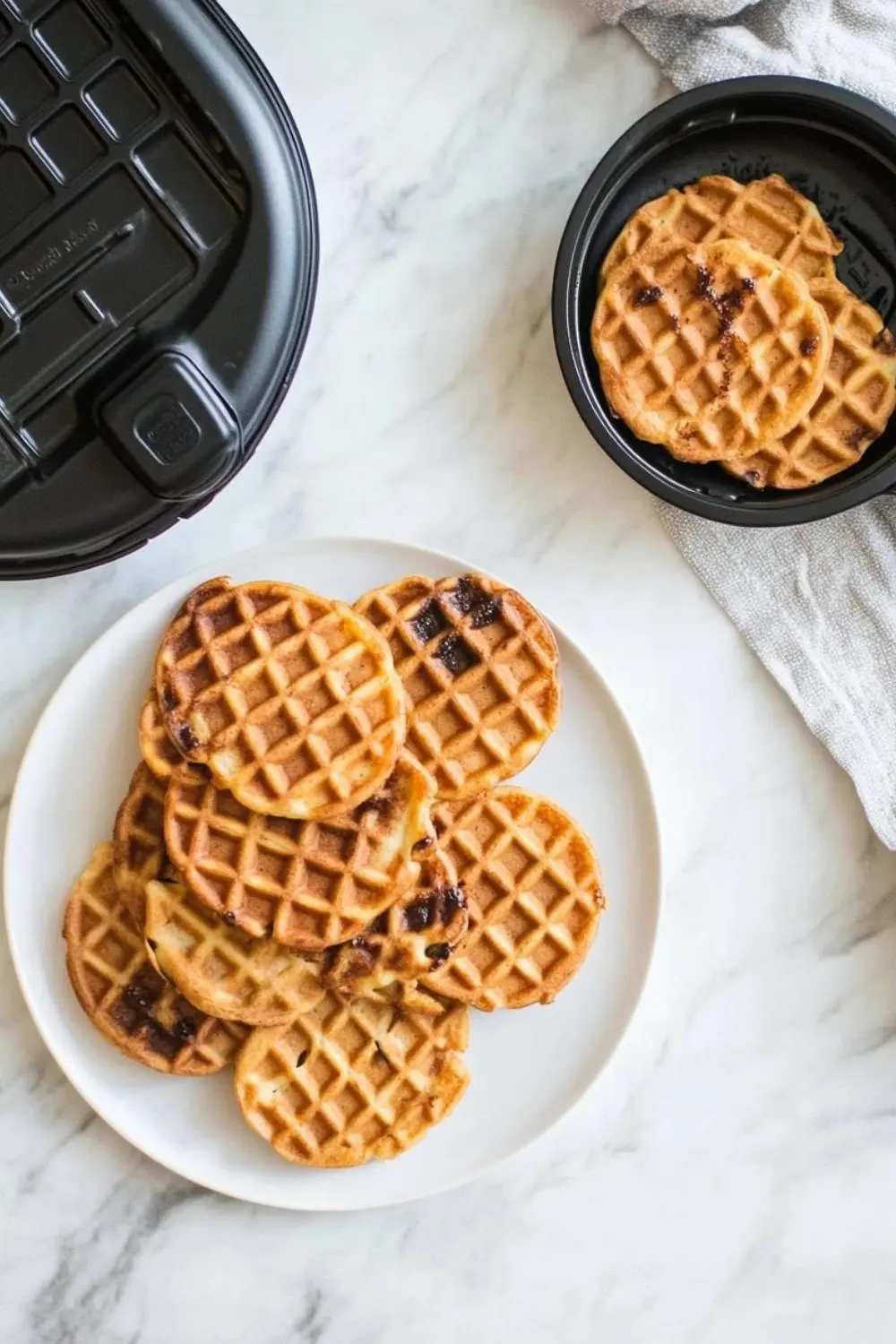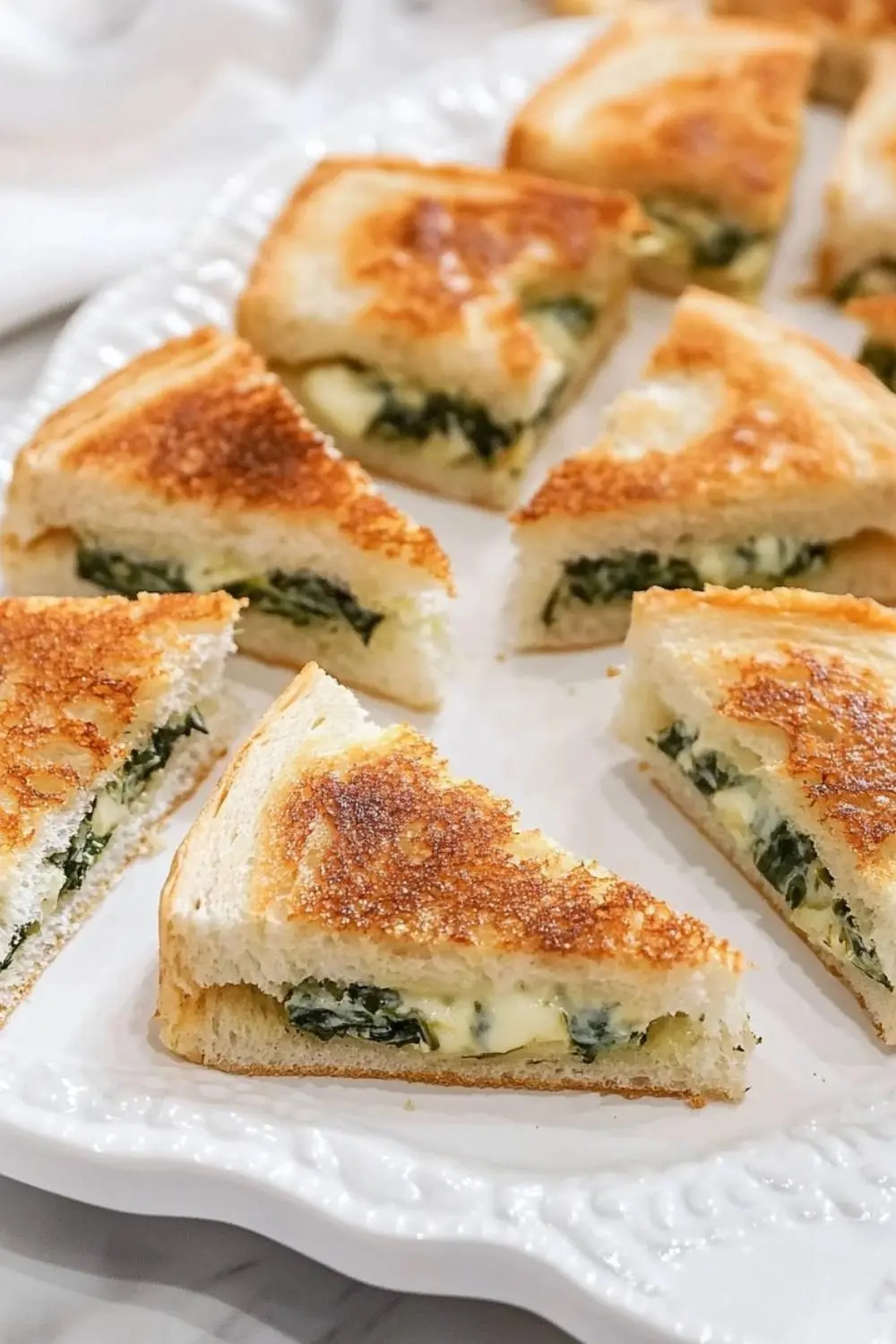This savory Herb-Roasted Turkey Breast with Duck Fat Gravy by Giada is prepared using turkey breast, fresh thyme, fresh rosemary, duck fat, and garlic. This flavorful Herb-Roasted Turkey Breast recipe is a perfect dinner dish that takes about 70 minutes to prepare and can serve up to 4 to 6 people.

Recipe Ingredients
For the Turkey Breast:
- ½ turkey breast (about 3 pounds)
- 2 teaspoons of finely chopped fresh thyme
- 2 teaspoons of finely chopped fresh rosemary
- ¼ teaspoon of crushed red pepper flakes
- 2 garlic cloves, finely chopped
- 3 tablespoons of duck fat, warmed gently to a liquid
- 1 teaspoon of kosher salt
For the Duck Fat Gravy:
- 2 tablespoons of all-purpose flour
- 3 tablespoons of white wine
- 1 cup of low-sodium chicken broth
How To Make Giada Herb-Roasted Turkey Breast
For the Turkey Breast:
- Bring the Turkey to Room Temperature: To ensure even roasting, let the turkey breast sit out at room temperature for about 30 minutes before cooking.
- Preheat Your Oven: Start by preheating the oven to 400°F (200°C) to get it ready for roasting.
- Prepare the Herb Mixture: In a small bowl, combine the finely chopped thyme, rosemary, red pepper flakes, and garlic with the warmed duck fat until it’s well-mixed.
- Season the Turkey Breast: Evenly sprinkle the kosher salt over the turkey breast. Rub the herb mixture generously all over the turkey breast, making sure to coat all sides well.
- Sear the Turkey Breast: Heat a medium skillet over medium-high heat and place the turkey breast skin side down. Sear until the skin is golden brown and crispy, about 4 minutes, then flip and sear the other side for an additional 4 minutes.
- Roast the Turkey Breast: Transfer the turkey breast to a rimmed baking sheet along with the leftover duck fat from the skillet. Roast the turkey in the preheated oven for 35 to 45 minutes, flipping it every 15 minutes and basting it with the pan juices to keep it moist. The turkey is done when an instant-read thermometer inserted into the thickest part of the meat reads 155°F (68°C).
- Rest and Slice: Once done, transfer the turkey breast to a cutting board and let it rest for 10 minutes before slicing to retain the juices and tenderness.
For the Duck Fat Gravy:
- Start the Roux: In a small saucepan, warm 4 tablespoons of the turkey drippings over medium heat. Add the flour and whisk continuously until a smooth paste forms, about 1 to 2 minutes.
- Incorporate the Wine: Gradually pour in the white wine while whisking, allowing the mixture to stay smooth and free of lumps.
- Add the Chicken Broth: Slowly add the chicken broth while whisking constantly, keeping the gravy smooth and lump-free.
- Simmer and Finish the Gravy: Continue to cook over medium heat, whisking often, until the gravy thickens slightly, about 5 minutes. If you prefer a smoother gravy, you can strain it before serving.
Recipe Tips
- Add More Flavor with a Brine: If you want an extra juicy turkey breast, consider brining it overnight in a simple saltwater solution with herbs. This helps infuse more moisture and flavor into the meat.
- Make it Spicy: For a spicier kick, add an extra ¼ teaspoon of crushed red pepper flakes to the herb mixture or even a dash of cayenne pepper. This adds a gentle heat that complements the rich duck fat gravy.
- Alternative to Duck Fat: If duck fat isn’t available, substitute with melted butter or olive oil. Butter adds a creamy richness, while olive oil keeps it lighter but still delivers a crispy texture.
- Try a Citrus Twist: Add some fresh lemon zest to the herb mixture or squeeze a bit of lemon juice over the turkey before roasting. This adds a bright, zesty note to balance the savory flavors.
- Make Ahead Gravy: If you’re short on time, make the gravy ahead and reheat it gently before serving. Just add a splash of broth while reheating to keep the consistency smooth and silky.
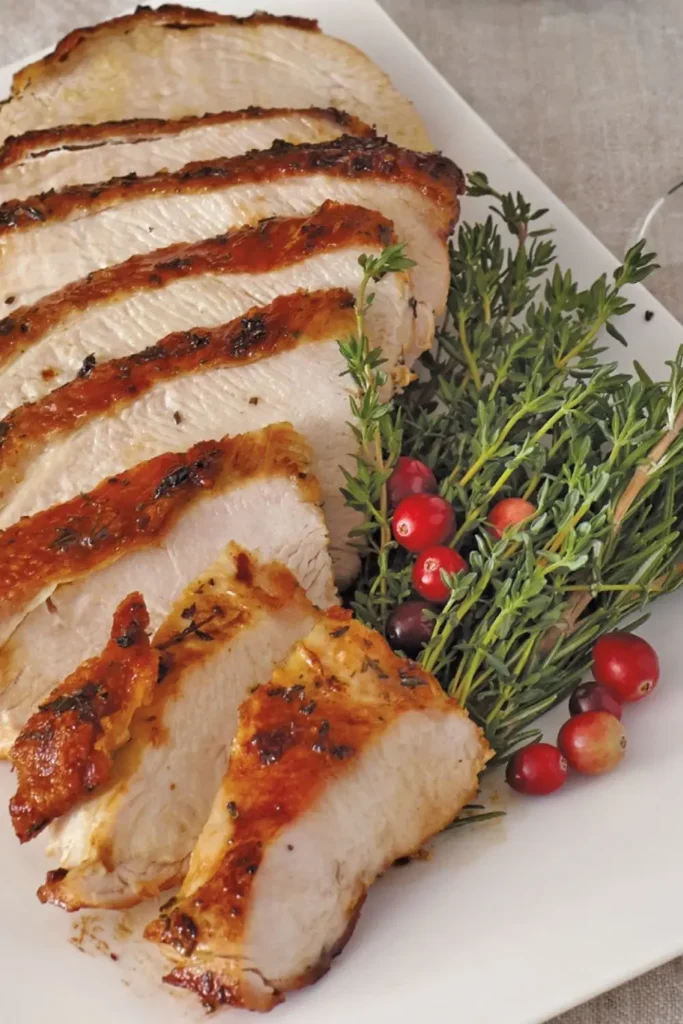
Recipe FAQs and Variations
How should I store leftover turkey breast?
Store leftovers in an airtight container in the refrigerator for up to 3 days. Reheat in a preheated oven at 300°F to keep the turkey moist and tender.
Can I use chicken instead of turkey breast?
Yes, chicken breasts can be used as a substitute, but adjust the cooking time to ensure the chicken doesn’t dry out. Aim for an internal temperature of 165°F.
Is it necessary to flip the turkey breast while roasting?
Flipping and basting the turkey helps it cook evenly and keeps it juicy, but if you prefer a simpler method, you can leave it skin-side up throughout the roasting.
Check out More Giada Recipes:
- Giada Turkey Meatballs in Tomato Sauce
- Giada Chicken Sausages and Mash
- Giada Orecchiette With Spicy Sausage and Broccoli Rabe
Giada Herb-Roasted Turkey Breast
Course: DinnerCuisine: ItalianDifficulty: Medium4
30
minutes50
380
kcalThis savory Herb-Roasted Turkey Breast with Duck Fat Gravy by Giada is prepared using turkey breast, fresh thyme, fresh rosemary, duck fat, and garlic. This flavorful Herb-Roasted Turkey Breast recipe is a perfect dinner dish that takes about 70 minutes to prepare and can serve up to 4 to 6 people.
Ingredients
- For the Turkey Breast:
½ turkey breast (about 3 pounds)
2 teaspoons of finely chopped fresh thyme
2 teaspoons of finely chopped fresh rosemary
¼ teaspoon of crushed red pepper flakes
2 garlic cloves, finely chopped
3 tablespoons of duck fat, warmed gently to a liquid
1 teaspoon of kosher salt
- For the Duck Fat Gravy:
2 tablespoons of all-purpose flour
3 tablespoons of white wine
1 cup of low-sodium chicken broth
Directions
- For the Turkey Breast:
- Bring the Turkey to Room Temperature: To ensure even roasting, let the turkey breast sit out at room temperature for about 30 minutes before cooking.
- Preheat Your Oven: Start by preheating the oven to 400°F (200°C) to get it ready for roasting.
- Prepare the Herb Mixture: In a small bowl, combine the finely chopped thyme, rosemary, red pepper flakes, and garlic with the warmed duck fat until it’s well-mixed.
- Season the Turkey Breast: Evenly sprinkle the kosher salt over the turkey breast. Rub the herb mixture generously all over the turkey breast, making sure to coat all sides well.
- Sear the Turkey Breast: Heat a medium skillet over medium-high heat and place the turkey breast skin side down. Sear until the skin is golden brown and crispy, about 4 minutes, then flip and sear the other side for an additional 4 minutes.
- Roast the Turkey Breast: Transfer the turkey breast to a rimmed baking sheet along with the leftover duck fat from the skillet. Roast the turkey in the preheated oven for 35 to 45 minutes, flipping it every 15 minutes and basting it with the pan juices to keep it moist. The turkey is done when an instant-read thermometer inserted into the thickest part of the meat reads 155°F (68°C).
- Rest and Slice: Once done, transfer the turkey breast to a cutting board and let it rest for 10 minutes before slicing to retain the juices and tenderness.
- For the Duck Fat Gravy:
- Start the Roux: In a small saucepan, warm 4 tablespoons of the turkey drippings over medium heat. Add the flour and whisk continuously until a smooth paste forms, about 1 to 2 minutes.
- Incorporate the Wine: Gradually pour in the white wine while whisking, allowing the mixture to stay smooth and free of lumps.
- Add the Chicken Broth: Slowly add the chicken broth while whisking constantly, keeping the gravy smooth and lump-free.
- Simmer and Finish the Gravy: Continue to cook over medium heat, whisking often, until the gravy thickens slightly, about 5 minutes. If you prefer a smoother gravy, you can strain it before serving.
Nutrition Facts
4 servings per container
- Amount Per ServingCalories380
- % Daily Value *
- Total Fat
22g
29%
- Saturated Fat 7g 35%
- Cholesterol 85mg 29%
- Sodium 480mg 21%
- Total Carbohydrate
4g
2%
- Dietary Fiber 0.5g 2%
- Total Sugars 1g
- Protein 34g 68%
* The % Daily Value tells you how much a nutrient in a serving of food contributes to a daily diet. 2,000 calories a day is used for general nutrition advice.

